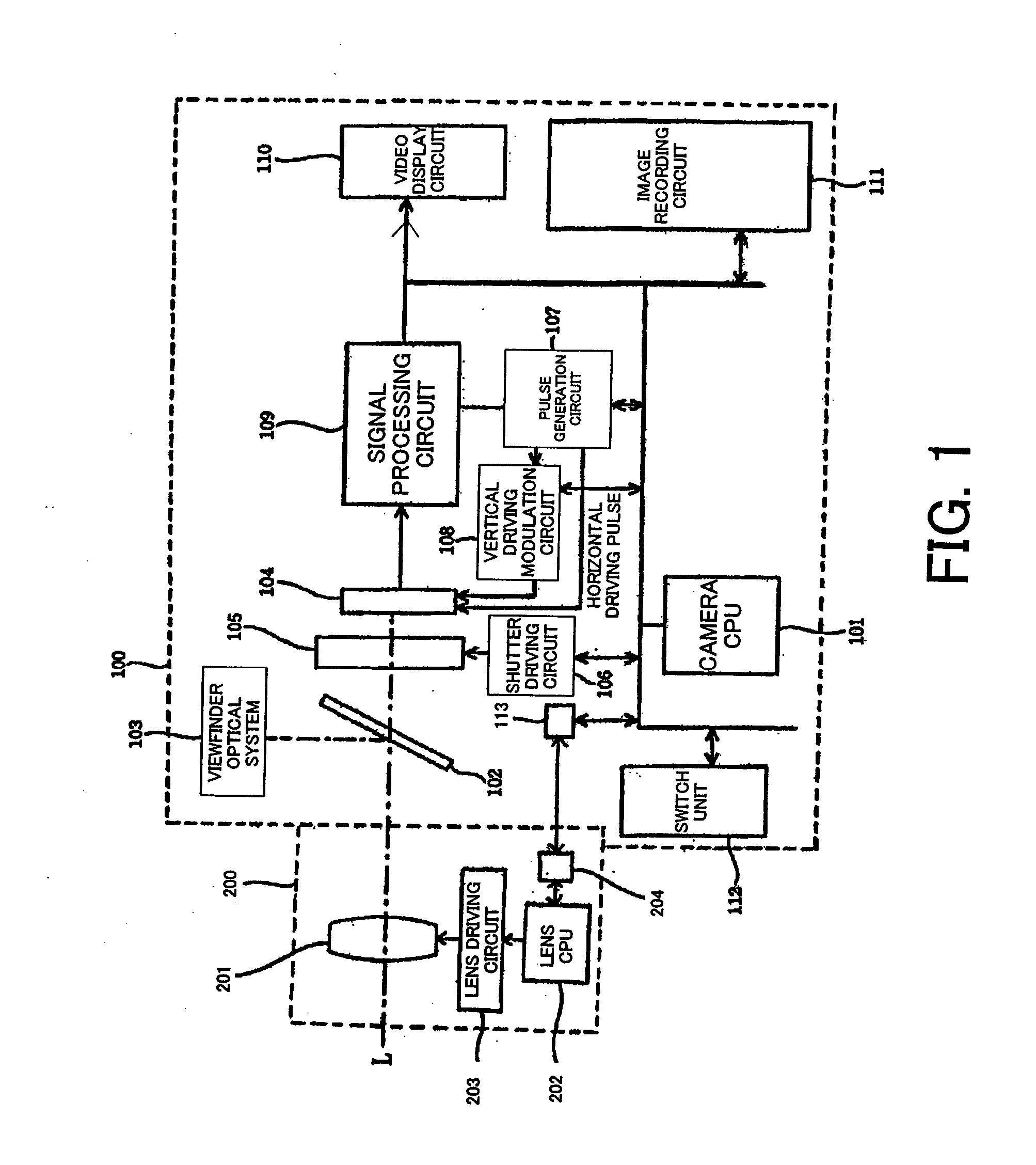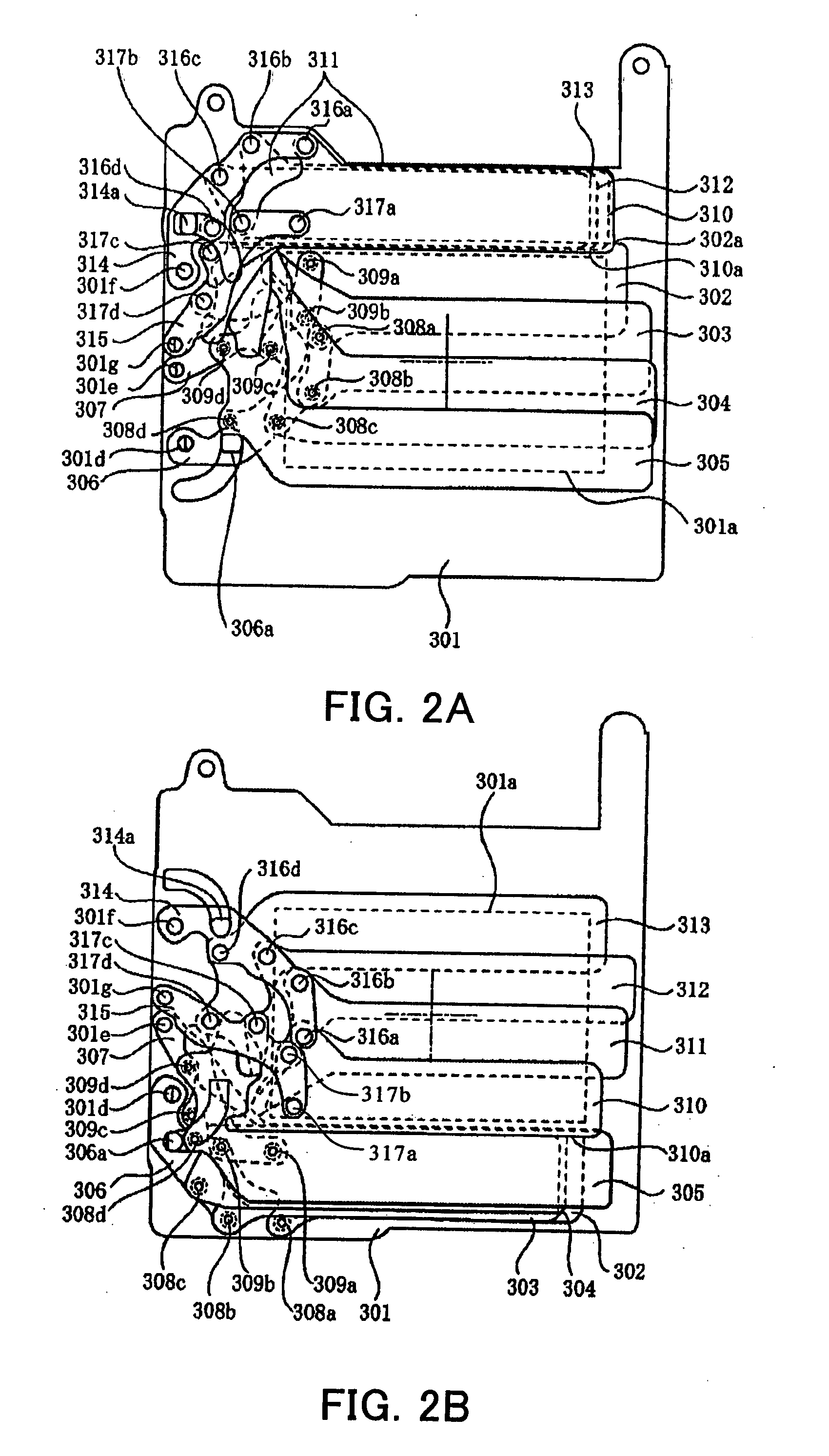Image-taking apparatus and control method of image-taking apparatus
a control method and image-taking technology, applied in the field of exposure control techniques, can solve the problems of inability to finish the accumulation operation simultaneously in all pixels, inability to prevent the occurrence of smear, and inability to take a still image of a moving subject with a cmos image sensor
- Summary
- Abstract
- Description
- Claims
- Application Information
AI Technical Summary
Benefits of technology
Problems solved by technology
Method used
Image
Examples
embodiment 1
[0028]FIG. 1 shows the structure of an image-taking system according to Embodiment 1 of the present invention. The image-taking system according to Embodiment 1 has a camera body 100 serving as an image-taking apparatus and an interchangeable lens apparatus 200 which is mounted on the camera body 100. The interchangeable lens apparatus 200 may not be removably mounted on the camera body 100 and it may be integrally formed with the camera body 100.
[0029] First, description will be made of the structure in the interchangeable lens apparatus 200. Reference numeral 201 shows an image-taking lens which is movable in the direction of an optical axis L. While FIG. 1 shows only one lens for simplicity, the lens apparatus 200 includes a plurality of lens units.
[0030] Reference numeral 202 shows a lens CPU, and 203 a lens driving circuit. The lens CPU 202 controls the position of the image-taking lens 201 through the lens driving circuit 203. The lens CPU 202 communicates with a camera CPU ...
embodiment 2
[0103] Next, description will be made of Embodiment 2 centered on differences from Embodiment 1. The basic structure of an image-taking system according to Embodiment 2 is substantially the same as that of the image-taking system according to Embodiment 1 except that a shutter apparatus 105 of a camera body 100 has no front blade in the image-taking system in Embodiment 2.
[0104]FIG. 10 shows the structure of the shutter apparatus 105 according to Embodiment 2 of the present invention. It differs from the shutter apparatus in Embodiment 1 in that it does not have a front curtain slit forming blade 302, a first front blade 303, a second front blade 304, a third front blade 305, a first arm 306 for the front blade, a second arm 307 for the front blade, caulked dowels 308a to 308d, or 309a to 309d which constitute the front blade. In other words, the shutter apparatus 105 of Embodiment 2 only has a rear blade. Specifically, it only has the rear blade formed by a rear blade slit forming...
PUM
 Login to View More
Login to View More Abstract
Description
Claims
Application Information
 Login to View More
Login to View More - R&D
- Intellectual Property
- Life Sciences
- Materials
- Tech Scout
- Unparalleled Data Quality
- Higher Quality Content
- 60% Fewer Hallucinations
Browse by: Latest US Patents, China's latest patents, Technical Efficacy Thesaurus, Application Domain, Technology Topic, Popular Technical Reports.
© 2025 PatSnap. All rights reserved.Legal|Privacy policy|Modern Slavery Act Transparency Statement|Sitemap|About US| Contact US: help@patsnap.com



